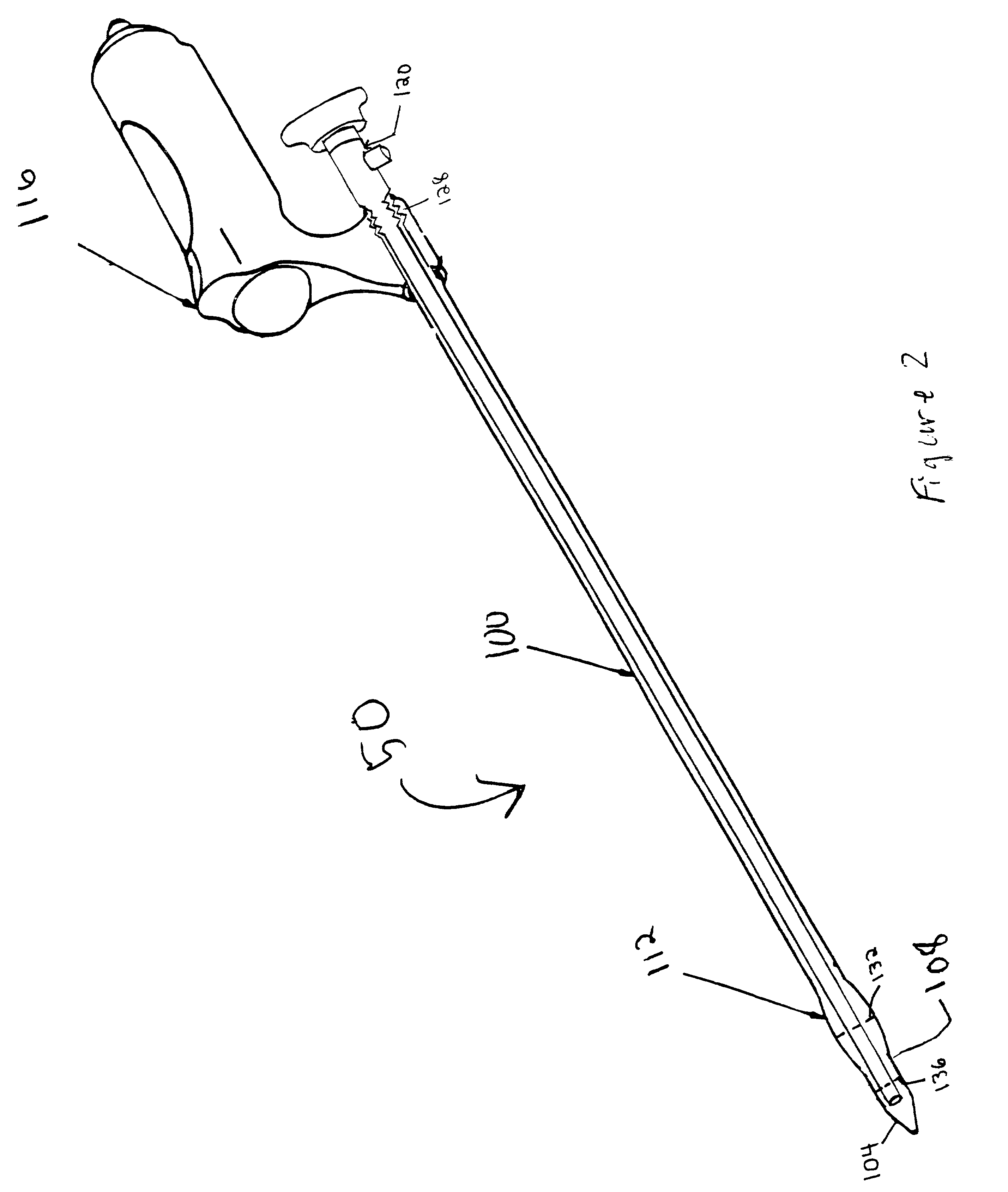Tissue dissector apparatus
a tissue dissector and apparatus technology, applied in the field of surgical equipment, can solve the problems of increasing the difficulty of operation, difficult to retain the precise hand control needed to perform the surgical procedure, and difficulty in using different tools at the same time in the surgical cavity, and achieve the effect of enlarge the surgical cavity
- Summary
- Abstract
- Description
- Claims
- Application Information
AI Technical Summary
Benefits of technology
Problems solved by technology
Method used
Image
Examples
Embodiment Construction
[0024]FIG. 1 illustrates a tissue dissector 50 in which a cannula 100 is coupled to a dilating element 112. The proximal end of cannula 100 is coupled to a handle 116 and the distal end of cannula 100 is enclosed by transparent tapered tip 104. Dilating element 112 is positioned inwardly from the distal end of the cannula 100. Cannula 100 may be made from a variety or combination of bioinert, substantially inelastic materials, such as stainless steel, polyethylene, polyurethane, polyvinyl chloride, polyimide plastic, and the like that preferably have a tensile strength of at least 10,000 psi. Handle 116 is ergonomically formed to allow a surgeon to easily and comfortably manipulate cannula 100 within a surgical cavity.
[0025]FIG. 2 illustrates a cut-away side sectional view of tissue detector 50. As shown, the distal end of cannula 100 has an outer diameter or dimension 136, and the dilating element 112 has an outer dimension 132 which is greater than the diameter 136. The proximal p...
PUM
 Login to View More
Login to View More Abstract
Description
Claims
Application Information
 Login to View More
Login to View More - R&D
- Intellectual Property
- Life Sciences
- Materials
- Tech Scout
- Unparalleled Data Quality
- Higher Quality Content
- 60% Fewer Hallucinations
Browse by: Latest US Patents, China's latest patents, Technical Efficacy Thesaurus, Application Domain, Technology Topic, Popular Technical Reports.
© 2025 PatSnap. All rights reserved.Legal|Privacy policy|Modern Slavery Act Transparency Statement|Sitemap|About US| Contact US: help@patsnap.com



